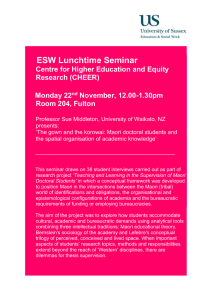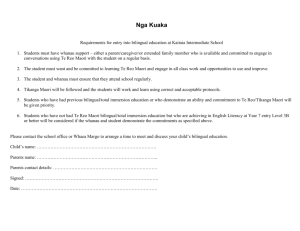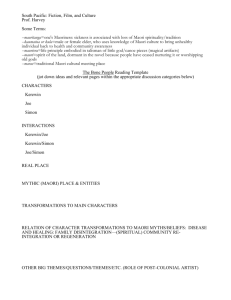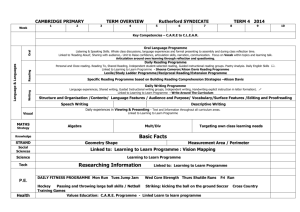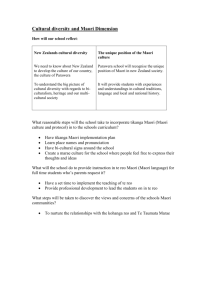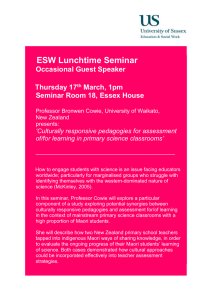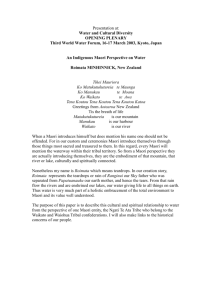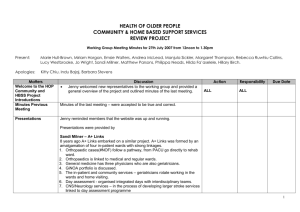Issues: Using Te ao Maori
advertisement
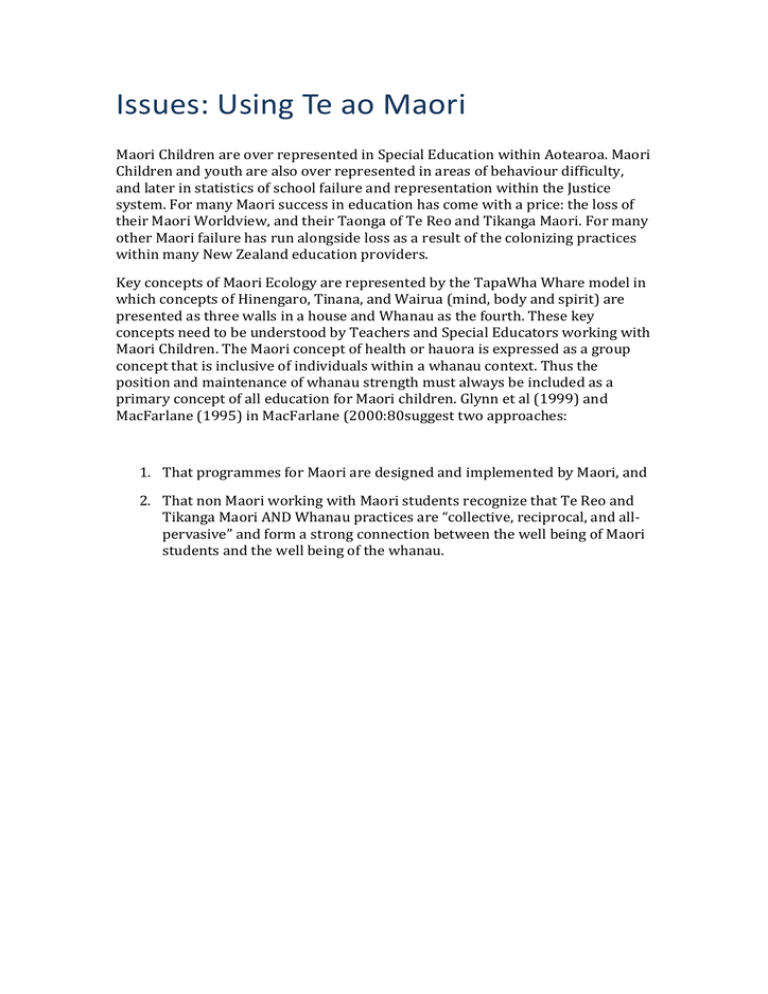
Issues: Using Te ao Maori Maori Children are over represented in Special Education within Aotearoa. Maori Children and youth are also over represented in areas of behaviour difficulty, and later in statistics of school failure and representation within the Justice system. For many Maori success in education has come with a price: the loss of their Maori Worldview, and their Taonga of Te Reo and Tikanga Maori. For many other Maori failure has run alongside loss as a result of the colonizing practices within many New Zealand education providers. Key concepts of Maori Ecology are represented by the TapaWha Whare model in which concepts of Hinengaro, Tinana, and Wairua (mind, body and spirit) are presented as three walls in a house and Whanau as the fourth. These key concepts need to be understood by Teachers and Special Educators working with Maori Children. The Maori concept of health or hauora is expressed as a group concept that is inclusive of individuals within a whanau context. Thus the position and maintenance of whanau strength must always be included as a primary concept of all education for Maori children. Glynn et al (1999) and MacFarlane (1995) in MacFarlane (2000:80suggest two approaches: 1. That programmes for Maori are designed and implemented by Maori, and 2. That non Maori working with Maori students recognize that Te Reo and Tikanga Maori AND Whanau practices are “collective, reciprocal, and allpervasive” and form a strong connection between the well being of Maori students and the well being of the whanau.
